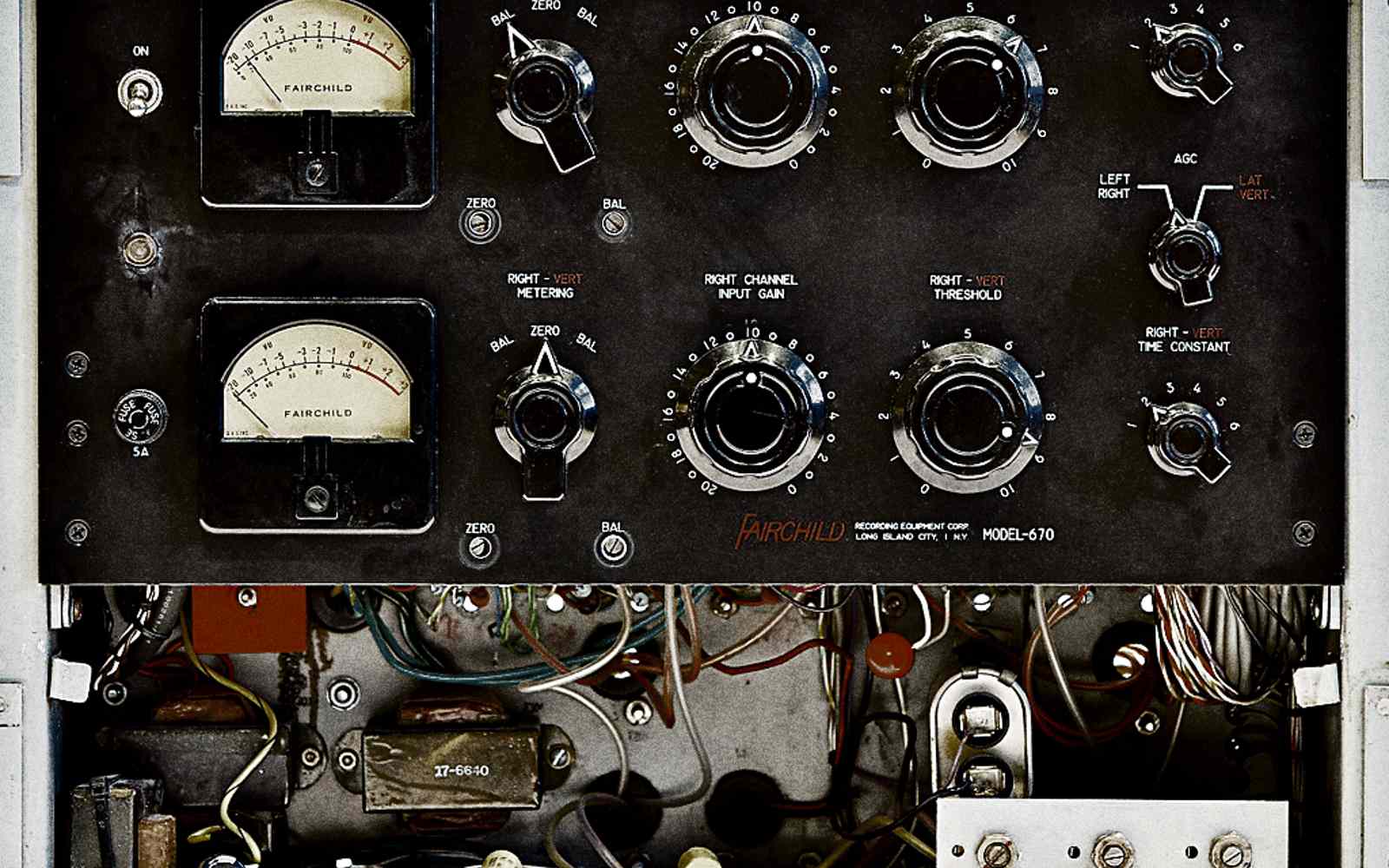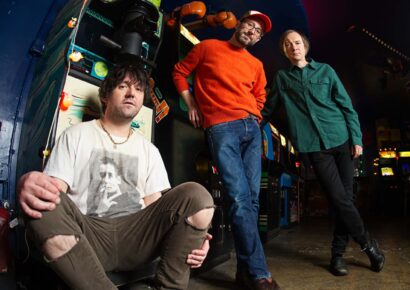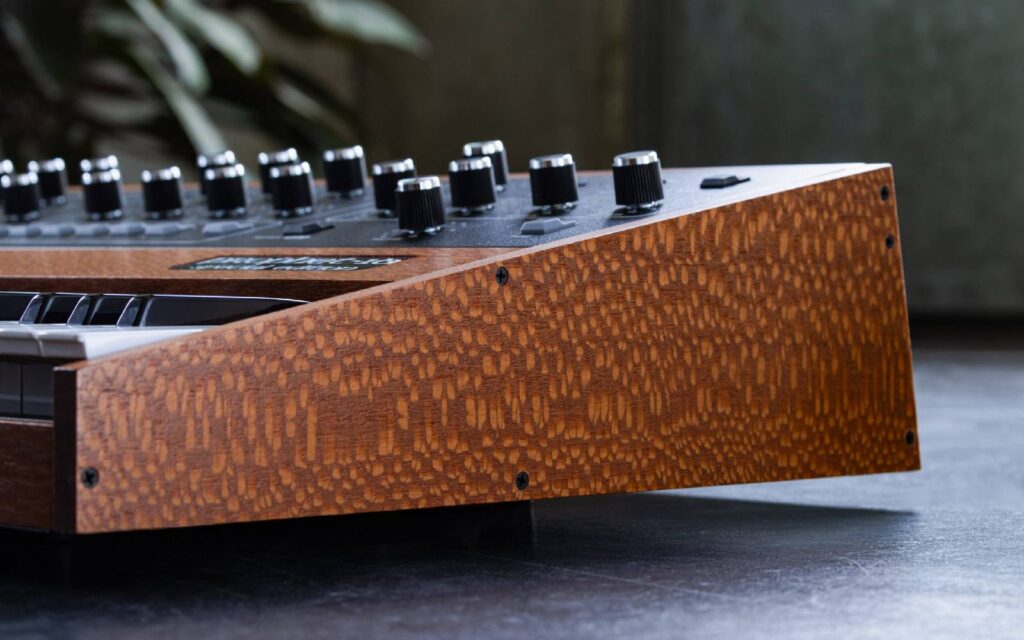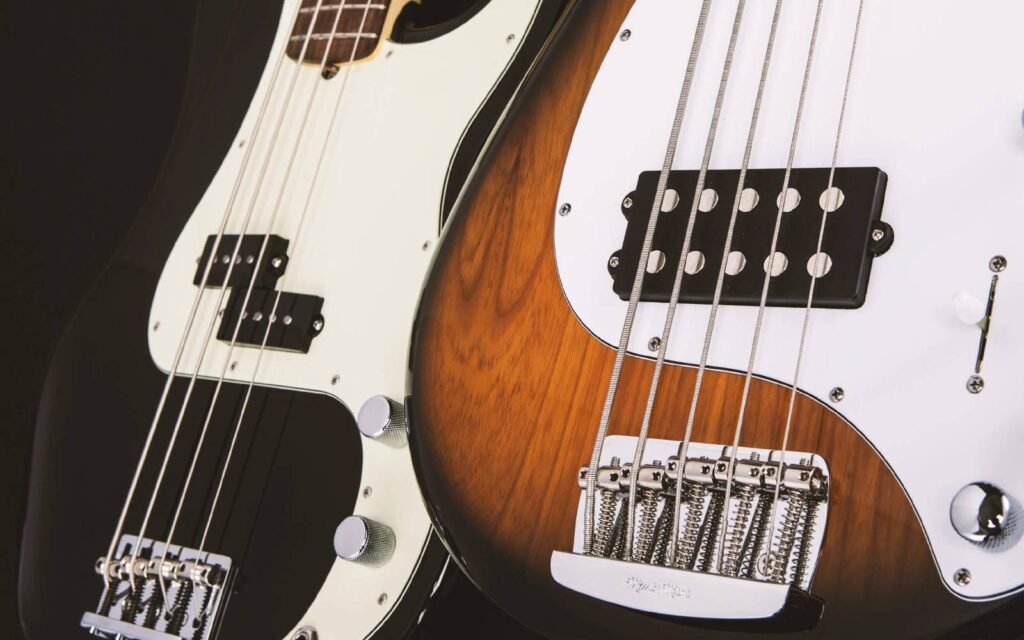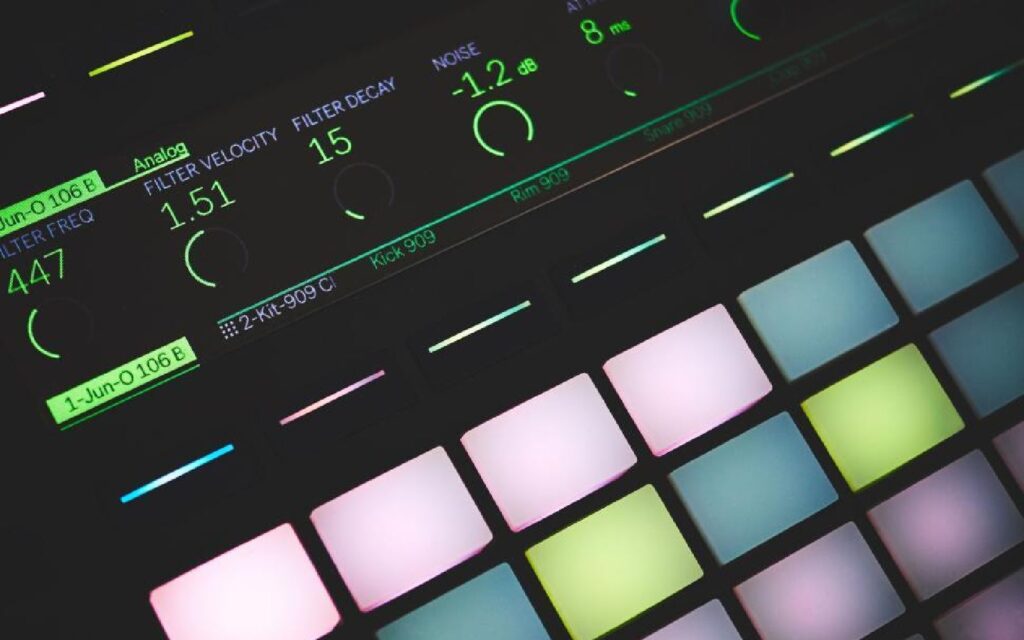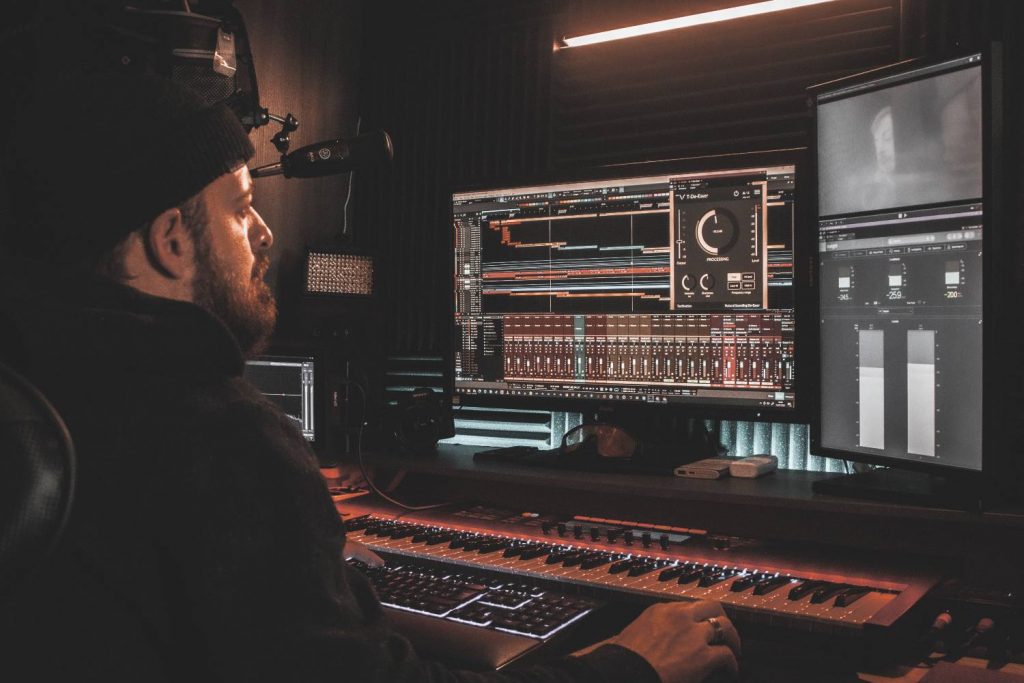Released in the late 50s, original units are rare as hens’ teeth, and even if you can find one in working condition, you’ll probably need to part with your house deposit and/or your kidneys to get your hands on it.
The iconic Fairchild 670, revered and adored for its uniquely smooth, lush, musical characteristics, spent just a few short years in production before it was canned due to the expense and difficulty maintaining the units. Only a few hundred units were ever made, but that didn’t stop them from finding their way into the hearts and records of such greats as Phil Spector, Brian Wilson and George Martin, to name just a few.
Fairchild Recording Equipment Corporation
If you’re reading this article, you probably associate the Fairchild name with the audio industry. However, the Fairchild Recording Equipment Corporation barely earns two short sentences in the sizable Wikipedia page of its founder, Sherman Fairchild. An entrepreneur, inventor, heir to an IBM fortune, and compulsive founder of companies, Fairchild is perhaps most notable for his contributions to the aviation and photography industries.
Read all the latest features, columns and more here.
Fairchild’s foray into audio equipment began in 1931, as something of a side-hustle to his main interests. The Fairchild Recording Equipment Corporation seized upon the boom in creating and playing back recorded audio, producing microphone preamps, turntables, hi-fi power amps, and cutting lathes, some of which are still prized by collectors today for their superior build and sound quality. It’s entirely possible, however, that this subsidiary of the Fairchild empire would’ve faded into obscurity, if not for their introduction to one Rein Narma in the late 50s.
Narma was an Estonian-born electromechanical engineer who migrated to the US in ‘51 after a storied career in war-ravaged Europe. He’d worked as a civilian radio engineer for the US army, before landing a gig with the UN procuring and maintaining recording equipment used at Nuremberg trials, and then touring post-WWII refugee camps to interview their inhabitants and record their music.
Once stateside, he held various positions in the audio industry before going it alone with Rein Narma Audio Development Company in ‘55. He must have been doing something right, with a client list including Les Paul and the legendary jazz producer Rudy Van Gelder. It was whilst designing Les Paul’s studio in New Jersey that Narma conceived of the “intelligent automatic volume control limiter”; impressed, Paul introduced Narma to his friend Sherman Fairchild. Narma licensed the production of his compressor to the Fairchild Recording Equipment Corporation, and was appointed their Chief Engineer; the Fairchild 660 was born.
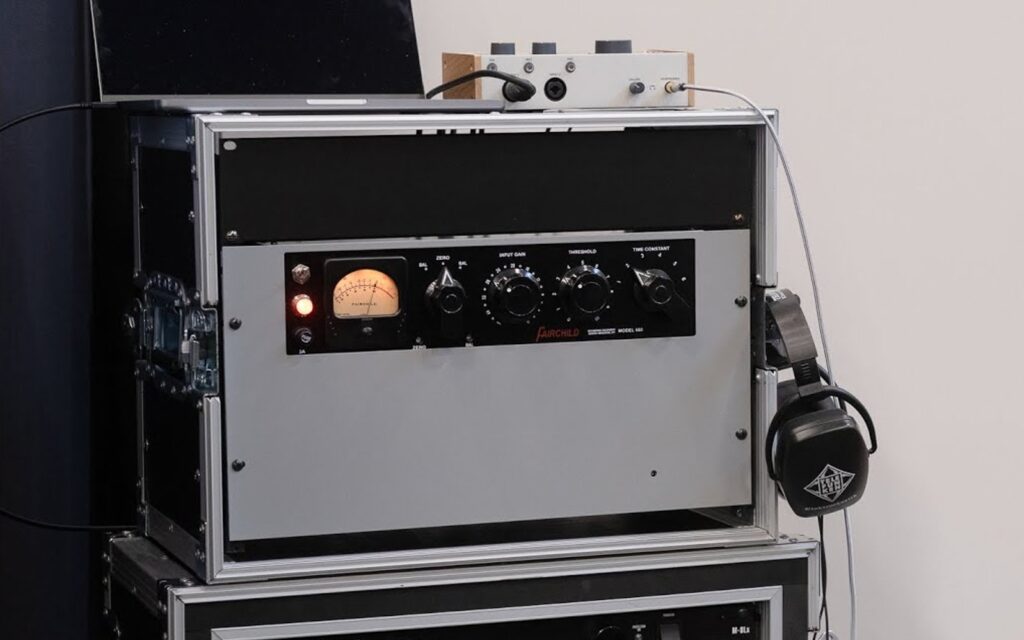
Fairchild 660
Released in 1959, the Fairchild 660 was a mono variable-mu compressor, the first of its kind, offering much faster attack times than anything else on the market at the time, with minimal distortion or artefacts. It was originally deployed as a functional limiter, to prevent damage to the valves in broadcast equipment or the styli of cutting lathes caused by unwanted peaks and transients.
The Fairchild 670, released later that year, was the stereo version, with the revolutionary ability to operate in lateral/vertical mode (now more commonly termed mid/side, or sum/difference). This was a feature aimed at helping engineers save space in the grooves of those newfangled stereo records by processing stereo information separately to mono.
Variable-mu, vari-mu, vari-µ
Enclosed in the enormous 6U, 30kg metal box of the 670 was a brand new type of compression circuit, dubbed “vari-mu”, whose innovation was to use the properties of the amplification valves themselves to create compression.
Mu (µ) is a measure of a valve’s capacity to amplify a signal – their “strength”, if you will. A variable-mu valve has the ability to change the amount of amplification, or gain, it adds to a signal. This is achieved by changing the bias voltage, a small DC charge which is applied to a component in the valve called the control grid.
The circuit of the Fairchild 670 has two main sections – the amplification path and the sidechain. The amplification path is relatively simple – an input transformer balances and isolates the signal, which then feeds a valve amplification stage to boost the gain, before hitting the output transformer. It’s almost the same as a valve mic preamp.
The sidechain is where the magic happens; it monitors the input level, and produces a corresponding voltage when the signal exceeds the threshold. This voltage is applied to the control grid of the amplification valves to decrease the amount of gain added to the signal. The more the input signal exceeds the threshold, the greater the control voltage, and the more gain is reduced, resulting in compression.
Control panel
Like many great units of the era, the control panel is reasonably simple. The amount of compression is dialled in by balancing the “Input Gain” and “Threshold” dials, in a similar (but not identical) way to an 1176 or an LA2A. The time constants are adjusted by a six-position switch, with quick attack times ranging from 0.2ms to 0.8ms and moderate to slow release times from 300ms all the way through to 25 seconds (yes, seconds). Additional switches handle metering and toggle between stereo and lat/vert modes, with set-screws on the back of the unit allowing haphazard adjustment of the compression ratio from 2:1 through to 30:1.
Characteristics
Fairchild compressors are prized for their ability to add character, depth, and class to individual tracks, and glue busses together in a smooth, musical way. Though they were originally intended to help control transients in program material, the 670 has fallen out of favour on mix bus duty for most styles of music. Frequency content of mixes has changed dramatically since the 50s – fat, aggressive bass and punchy transients are a hallmark of many genres, and the 670’s ultra-fast attack times are simply too quick to allow these transients through unmolested.
Where it truly shines in a modern production is on vocals and instrument busses. It’s perfectly suited to taming harshness, sibilance and spitty transients in a vocal, and contributed in no small part to the iconic vocal sounds of The Beatles. On horn, keys, and vocal busses, it’s almost unrivalled in its ability to act as a “glue” to make disparate recordings sound cohesive by gracefully and musically shaping their collective envelope.
The final two positions of the time constant switch offer intelligent “automatic” release times, whereby bigger and more frequent peaks cause the release time to elongate, helping to reduce dynamic range smoothly and naturally, maintaining the natural ebb and flow of more complex program material like classical music.
Most mortal engineers will never experience the holy grail of an original Fairchild 670, such is their expense, rarity, and difficulty to keep in working order. The good news is that there’s plenty of alternatives out there, with plentiful hardware copies, and popular plugin versions released by Universal Audio, Waves and Acustica. Klanghelm’s MJUC jr. is a great free plugin as an introduction to vari-mu compression, so there’s no need to sell your bodily organs – go out and get yourself some Fairchild-flavoured goodness.
The Fairchild is back in production, keep reading here.
